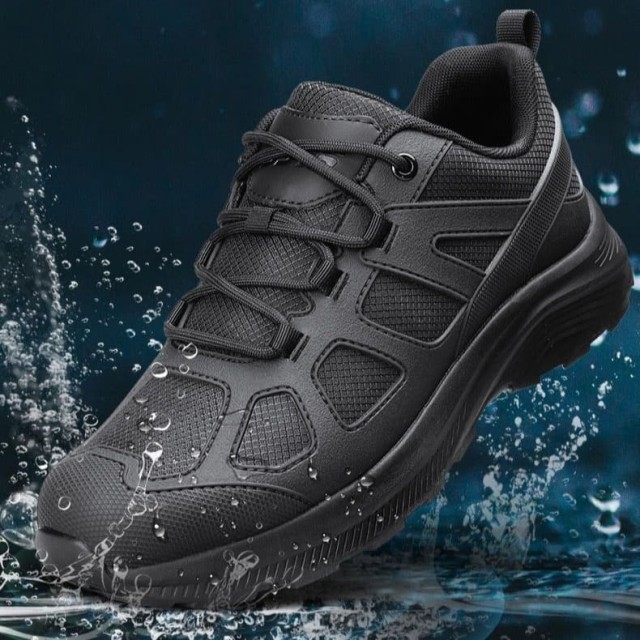Selecting the right safety boots isn’t just about compliance—it’s about matching features to your daily hazards while ensuring all-day comfort. Whether you’re navigating construction sites, hospital corridors, or electrical grids, the wrong boots can lead to fatigue, injuries, or costly replacements. Here’s how to align your footwear with workplace demands.
Choosing the Right Safety Boots for Your Job
Construction and Heavy Labor: Tackling Impact and Abrasion
Construction boots face relentless abuse from sharp debris, heavy loads, and unstable terrain. Prioritize these features:
- ASTM-rated toe protection: Steel or composite toes shield against crushing impacts.
- Abrasion-resistant materials: Full-grain leather or reinforced synthetics withstand scrapes and tears.
- TPU outsoles: Thermoplastic polyurethane soles resist oil slicks and provide superior grip on uneven surfaces (studies show TPU lasts ~30% longer than standard rubber in harsh conditions).
- Shank support: A steel or fiberglass shank prevents foot fatigue from walking on rebar or rocky ground.
Pro Tip: Rotate two pairs to extend lifespan. High-quality construction boots should last 2–3 years with proper care.
Healthcare and Hospitality: Prioritizing Hygiene and All-Day Comfort
Nurses, chefs, and cleaners log thousands of steps daily. Their boots need:
- Slip-resistant soles: Essential for greasy kitchens or hospital floors.
- Easy-to-clean uppers: Waterproof synthetic materials or treated leather repel fluids and simplify sanitizing.
- Breathable linings: Moisture-wicking fabrics reduce bacterial growth and odor.
- Lightweight design: Cushioned midsoles with arch support minimize fatigue during 12-hour shifts.
Did you know? Boots with poor arch support can increase lower back strain by up to 40% over time.
Electrical and Chemical Work: Specialized Materials for Hazard Mitigation
For electricians or chemical handlers, standard boots won’t cut it. Look for:
- EH-rated insulation: ASTM F2413-compliant boots block up to 18,000 volts, using non-conductive materials like fiberglass or composites.
- Chemical-resistant uppers: Nitrile or neoprene coatings repel acids and solvents.
- Seamless construction: Prevents corrosive liquids from seeping through stitching.
Safety first: Even a small conductive component (like a metal eyelet) can compromise electrical hazard protection.
Key Features That Transcend Industries
The Science of Arch Support: Reducing Long-Term Fatigue
Regardless of your job, poor support leads to chronic pain. Seek boots with:
- Contoured footbeds: Mimic the foot’s natural shape to distribute weight evenly.
- Shock-absorbing midsoles: EVA foam or gel inserts reduce joint impact by ~25%.
- Adjustable fit: Lace-up or BOA systems accommodate swelling during long shifts.
Real-world impact: Workers wearing properly supported boots report 50% fewer complaints of plantar fasciitis.
Material Lifespan: How Construction Quality Affects Replacement Costs
A $50 boot that lasts 6 months often costs more than a $150 boot lasting 3 years. Evaluate:
- Stitching: Double or triple stitching at stress points (like the toe box) prevents premature failure.
- Outsole bonding: Cemented or direct-attach soles outlast glued ones in wet conditions.
- Warranties: Brands offering 6+ month warranties typically use higher-grade materials.
Budget hack: Investing in recraftable boots (with replaceable soles/insoles) can save ~$100/year.
Step Into Safety with 3515
At 3515, we engineer boots that fuse OSHA-compliant protection with ergonomic comfort—because no one should choose between safety and stamina. Our bulk manufacturing expertise ensures distributors and brands receive durable, task-specific footwear tailored to their clients’ needs.
Ready to equip your workforce with boots that outperform the job’s demands? Partner with 3515 to customize solutions that reduce injuries and replacement costs.
Footnotes:
- ASTM = American Society for Testing and Materials
- EH = Electrical Hazard
- TPU = Thermoplastic Polyurethane
Related Products
- Wholesale Customizable Suede Safety Boots - Puncture-Proof with Velcro Closure
- Customizable Anti-Smash Safety Boots for Wholesale & Private Label Manufacturing
- Wholesale Anti-Smash & Puncture-Proof Safety Shoes Custom Manufacturing for Brands
- Safety Footwear Wholesale Manufacturer for Custom OEM/ODM Production
- Wholesale Safety Footwear Manufacturer for Bulk & Custom OEM Orders
Related Articles
- How to Extend Work Boot Lifespan: Science-Backed Care for Safety & Savings
- How Safety Work Boots Engineer Protection: Features and Standards for Targeted Hazard Mitigation
- How to Choose Work Boots That Match Your Job Demands and Safety Needs
- How to Choose Work Boots That Match Your Job's Safety Demands
- How to Choose Work Boot Materials for Maximum Safety and Durability



















